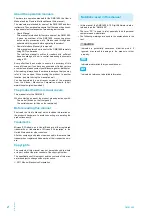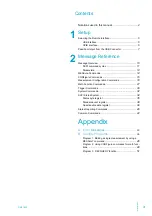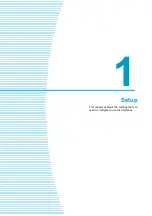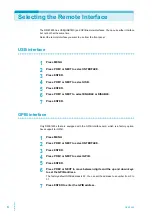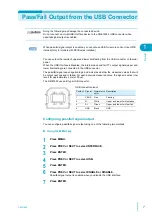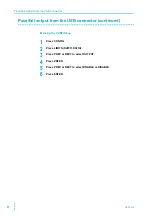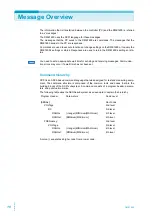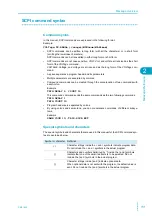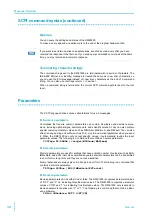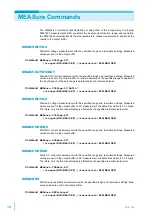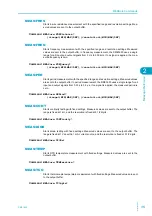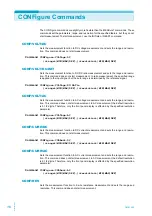
10
DME1600
Message Overview
The information that is transferred between the controller (PC) and the DME1600 is referred
to as “messages.”
The DME1600 uses the SCPI language for these messages.
The messages that the PC sends to the DME1600 are commands. The messages that the
DME1600 sends to the PC are responses.
Commands are used to execute functions or change settings on the DME1600 or to query the
DME1600’s settings or status. Responses are used to return the DME1600’s settings or sta-
tus.
Command hierarchy
SCPI is an ASCII-based command language that was designed for test and measuring equip-
ment. The command structure is composed of the common roots and nodes that are the
building blocks of the SCPI subsystem. A command consists of a program header, parame-
ters, and punctuation marks.
The following table uses the SENSe subsystem as an example to explain the hierarchy.
A colon (:) separates a higher node from a lower node.
You need to set an appropriate wait time for sending and receiving messages. Communica-
tion errors may occur if a wait time has not been set.
Program Header
Parameters
Node Level
[SENSe:]
Root node
VOLTage
2nd level
:DC
3rd level
:RANGe
{<range>|MINimum|MAXimum}
4th level
:RANGe?
[MINimum|MAXimum]
4th level
FREQuency:
2nd level
:VOLTage
3rd level
:RANGe
{<range>|MINimum|MAXimum}
4th level
:RANGe?
[MINimum|MAXimum]
4th level
Содержание DME1600
Страница 4: ...4 DME1600 This page left blank intentionally...
Страница 5: ...Setup This chapter explains the settings that you need to configure to use the interfaces 1...
Страница 9: ...Message Reference This chapter explains the SCPI com mands 2 Message Reference...
Страница 43: ...Appendix A Error Messages B Sample Programs...
Страница 55: ......


